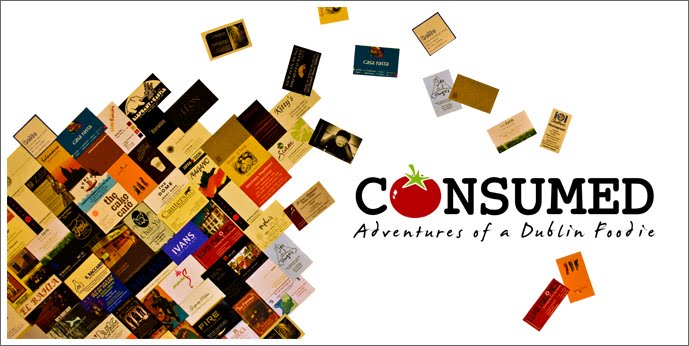Shortly after I went on, er… ‘hiatus’ in 2011, I travelled
to Japan to visit my brother who’s been working there for a good three years
now at least (I’ll have to check up on him with that, it’s been so long!). It
was a two week trip that was unfortunately punctuated by the Tōhoku earthquake but luckily we ended up being nowhere
near some of the worst affected areas. I went there with grand plans to use the
experience as a means to kick start myself into writing again by giving an in
depth look at all of the different foods I’d be trying. Obviously, that never
happened. Sorry everyone!
So, to make it up to you, here’s a very
belated and condensed summary of places I went to and foods I tried. Japanese
cuisine is one of my absolute favourites, so to say that I went there with
tunnel vision is a bit of an understatement! I didn’t get to eat everything I
wanted but in a country where delicious food is available on pretty much every
street you wander down, it’s a fairly minor complaint to come out with.
First stop was Kyoto, featuring a nearly three kilometre
walk along Teramachi Dori and the surrounding market streets. Here you’ll find
anything from seafood to hand crafted kitchen wares and a rake of Japanese fast
food stalls. The variety is incredible, and every stall is in some way unique
from the next.
Fried kamaboko (kind of a seafood paste), Kyoto
Plastic/wax food displays outside of most restaurants, Kyoto
Dorayaki pancake machine in Teramachi Dori, Kyoto
Food display, a bit more cute this time! Kyoto
Octopus stuffed with a boiled quail egg on a stick (I'm sure there's a name for it), Kyoto
Kyoto is also famed for the diversity of its food, and it
was here I probably tried the biggest range of dishes, from unagi to conveyor
sushi and mitarashi dango. The city has
such an amazing, old world feel to it, and restaurants are hidden in literally
every nook and cranny; half the time it’s impossible to tell what might and
might not be one!
Bamboo shoot kushiyaki with yam jelly, Kyoto
Musashi Sushi moving window display, Kyoto
Tuna tartare gunkanmaki in Mushashi Sushi, Kyoto
Mitarashi dango (grilled rice dumplings in a sweet soy sauce) Kyoto
Matcha green tea with rakugan at Kinkaku-ji Tea House
Tamagoyaki (omelette) over unagi and rice at Kaneyo, Kyoto
On a side note, If you haven’t ever had the pleasure of
trying katsu curry yet, I urge you to check out your nearest Japanese
restaurant and fix that problem. It’s the perfect blend of crispiness and
juiciness, which when mixed with Japanese curry and rice becomes the most
amazing comfort food. It’s quite probably my favourite dish, so no prizes for
guessing which kind of restaurant I was on the lookout for. As luck would have
it, our first hostel was a few steps up the road from a little placed called Café
Curry Sakakura. Jackpot. For whatever reason, I didn’t take many pictures there
but the menu alone just goes to show that if there’s any kind of meat or veg
you like, chances are you’ll be able to get it fried up and served with curry.
Katsu curry everything!
The next major city we visited was Osaka. Known as the
‘nation’s kitchen’, it’s home to one of Japan’s most distinctive street foods,
takoyaki. We’d already tried some in Kyoto so regrettably I passed up the
chance while I was there, but I did instead try some fugu, the notorious puffer
fish. This was in Zuboraya, one of many specialist fugu restaurants you’d find
in
Dōtonbori; the neon lit, night
crawling central neighbourhood where eating, drinking, shopping and tourism all
come together. If I’d had the money or the time, I probably would have ended up
trying every single one of the restaurants there but as it happens, we could
only spend a couple of hours exploring. Maybe next time!
Takoyaki street vendor, Osaka
Fugu shabu-shabu in Zuboraya, Osaka
And then came Tokyo. Halfway through our time there, Japan
was hit by the Tōhoku earthquake
so the city slowed down considerably in the aftermath. Nonetheless, we still
got to eat in one or two izakayas, ramen joints and of course, a katsu curry
restaurant. It was actually just as we finished having a lunch that the
earthquake happened! And even though we had to high tail it outside into the
street, we didn’t forget to go back and pay the bill.
Ramen, Tokyo
Yakitori, Tokyo
Gyoza, Tokyo
Yet more ramen, Tokyo
Vending machines, everywhere!
Last but definitely not least, the highlight of the trip for
me was Tsukiji Fish Market. I wasn’t so dedicated that I got up at three in the
morning to see the tuna auctions, but I did arrive early enough to experience
its legendary organised chaos. Afterwards, we did the only thing one should do;
had a sushi breakfast in a nearby restaurant called Tsukiji Sushi Sen. It was
the first time I’d ever tasted sea urchin and I only wish it were easier to
find in restaurants on this side of the world because it was every bit as
delicious as I’d been told. Definitely not your traditional breakfast, but it
ranks up there amongst the best I’ve ever had.
Tsukiji Fish Market, Tokyo
Sushi platter at Tsukiji Sushi Sen, Tokyo
All in all, the food of Japan was everything I had
hoped for and my only regret is that I didn’t try more! But that’s a very
convenient excuse to revisit someday, which I will. When that happens, I
promise not to leave it another four years before I actually write something
about it.



























